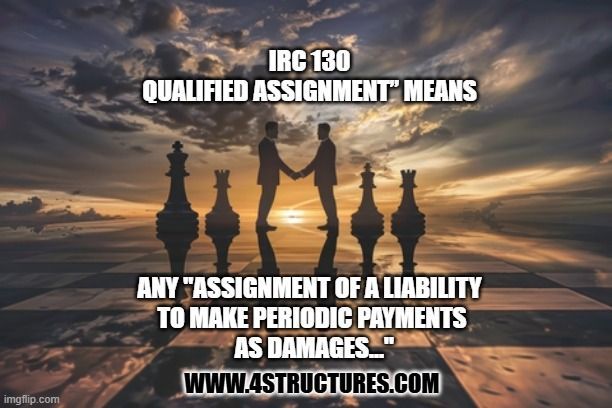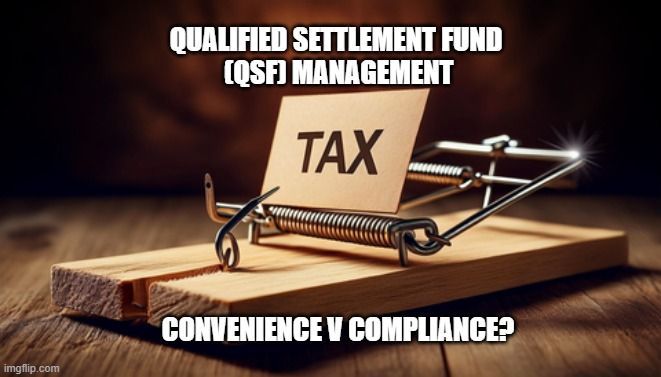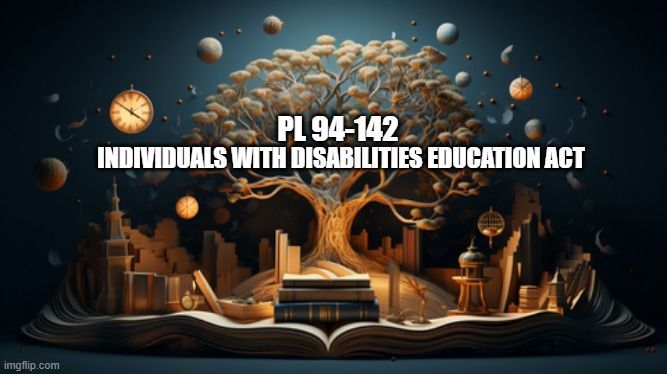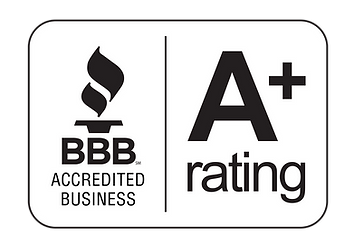Structured Settlement Commutation Riders with SNTs Best Practices
How to Commute Structures Humanely, Satisfy Medicaid and Avoid Shafting Survivors in the Process

Care must be taken when establishing a structured settlement using an oft mandated commutation rider in conjunction with a structured settlement paid to a Special Needs Trust or Supplemental Needs Trust
If the structured settlement commutation dial is set to a 100% commutation and there is already enough money in the SNT to satisfy the Medicaid lien obligation at the death of the Measuring Life, then the periodic payments have been needlessly discounted. The spouse and/or others heirs might have been better off if the structured settlement is maintained, receiving income tax-free payments as scheduled. How do address this risk when life can be unpredictable?
Berkshire Hathaway has a thoughtful solution that covers both contingencies, (1) there are insufficient monies in the special needs trust to satisfy Medicaid liens (2) there are sufficient monies in the special needs trust to satisfy Medicaid obligations and is available in 46 states that are members of the Interstate Insurance Compact.
BACKGROUND ON STRUCTURED SETTLEMENT COMMUTATION RIDERS
What is a structured settlement commutation rider?
A structured settlement commutation rider is an optional provision in a structured settlement that provides for a conversion of some or all of the future structured settlement payments to a lump sum timed to a specific event and in accordance with a formula specified in the settlement agreement, qualified assignment and the structured settlement annuity contract.
What is the purpose of a structured settlement commutation rider?
The most common commutation rider is a commutation rider at death of the annuitant. The initial reason that commutation riders were established, way to provide estate liquidity to (1) help pay federal and state estate or inheritance taxes*, (2) provide for post mortem planning cash needs of beneficiaries. and later (3) to settle/pay of Medicaid liens where the structured settlement was paying into a Supplemental Needs Trust or Special Needs Trust. Indeed it is generally a local mandate in New York City counties that a commutation rider be used when a structured settlement pays into an SNT.
*In 1995, the estate federal estate tax exemption was only $600,000 and a maximum federal rate of 55% could be applied at the top end! By 2007, the maximum federal estate tax rate was 46% of taxable estates over $2,000,000, a relatively small ramp up when considering the size of some personal injury lawsuit recoveries involving plaintiffs with special needs. For 2024, the personal federal estate tax exemption amount is $13.61 million. This means that when someone dies and the value of their estate is calculated, any amount more than $12.06 million is subject to the federal estate tax unless otherwise excluded. A married couple has a combined exemption for 2024 of $27.22 million. The estate tax exemption is adjusted for inflation every year. The current exemption, set under the 2017 Tax Cuts and Jobs Act (TCJA), is set to expire in December 31, 2025. Absent an extension, the individual amount will return to pre-TCJA levels of $5,490,000 adjusted for inflation beginning January 1, 2026.
What did people do before commutation riders?
For those structured settlement brokers that recognized the issue, life insurance was purchased on the life of the annuitant. The life insurance would typically be applied for and owned by a trust to keep the life insurance proceeds out of the annuitant's estate. The life insurance solution was not viable however, for large neurologically impaired infant medical malpractice settlements where there was a high potential estate tax exposure and an uninsurable annuitant. In 1989, before I got into the structured settlement business full-time, I was contacted by a Brooklyn medical malpractice lawyer, whose infant client had recently died within a few years of the structured settlement's creation, leaving the parents saddled with the state and federal estate taxes on a $6 million structured settlement. It got me thinking.
When were commutation riders introduced?
The structured settlement commutation rider triggered at the death of the annuitant, was introduced by Allstate Life Insurance Company and Allstate Life Insurance Company of New York, in 1995. A favorable Private Letter Ruling on the commutation was issued by the IRS in conjunction with a medical malpractice case in New York City, paving the way for other life insurers issuing structured settlement annuities to follow with their own commutation riders. My colleague at the time, Frank Sheerin, then of Sheerin Corp ; a New York City personal injury attorney by the name of Frank P. Mangiatordi; Medical Liability Mutual Insurance Company, a New York medical malpractice insurer and their broker; and Larry Dahl, with the management team then at Allstate Life, collaborated on the resulting solution.
How is a structured settlement commutation rider established?
Whether or not to include a structured settlement commutation rider, including the percentage of payments to be commuted, must be determined up front and properly reflected in the Settlement Agreement and Release and qualified assignment documents when those documents are executed by the Plaintiff and the Defendant or Defendant's Insurer(s). Each life insurer that issues structured settlement annuities has its own preferred language to include in settlement documents.
Does a commutation rider cost anything?
A structured settlement commutation rider does not have any up front cost. However, and this is important, the cost of the commutation is recovered by the annuity issuer if the annuitant dies during a period when there are remaining payments subject to commutation. Commutation riders can only be applied to guaranteed or certain payments, not life contingent payments.
When triggered, generally a commutation rider will provide a lump sum, in a percentage of the present value of any guaranteed or certain payments remaining at the death of the annuitant. The percentage of present value paid in a lump sum varies by structured settlement annuity issuer. It is generally between 90-95%. The means for determination of present value that the commutation percentage applies to, also varies by structured settlement annuity issuer. It is something that should be scrutinized carefully.
How do insurance companies determine present value when a structured settlement commutation is triggered?
One uses the purchase price of an annuity on the date of death of the original annuitant, that will provide the remaining payments to be commuted and if those rates are not available (e.g. because the company has discontinued that line of business), discounted using a rate from a recognized bond index.
Two companies uses the term "net cost" of an annuity in its commutation, where it has emerged in correspondence to an annuitant that "net cost" means net of the structured settlement broker's commission when the structure was created. Several years ago I fielded a call from a widow from Florida, the former client of another industry colleague who was startled by this revelation after her husband died. When I conducted further research at the time, including speaking to the annuity departments at structured settlement annuity issuers. it emerged that several are a bit less transparent. Some do not expressly use the term "net cost" but appear to apply the same or similar methodology.
What's the potential downside of a "net cost" present value?
In cases in the New York City counties of Manhattan, Brooklyn, Bronx, Queens and Staten Island, or anywhere else that a structured settlement commutation rider is mandated where a structured settlements pays into a Supplemental Needs Trust, a net cost present value could result in less money commuted and with a Medicaid lien payoff at death could result in less money or no money paid to beneficiaries.
The most impact would be felt on a death within a few years of the structured settlement being created, where there are a substantial number of guaranteed or certain payment remaining. All other things being equal, on a minor's case, or other case where payments have a deferred start date and a large number of guaranteed and/or certain payments the present value could rise each year until the first payment is made. If the annuitant is 4 years old when the structured annuity is established and a lump sum at age 25 costs X$, at age 18 it might cost 2X$ at the insurer's then current rates
RESPONSIVE STRUCTURED SETTLEMENT COMMUTATION RIDERS
I. THE BERKSHIRE HATHAWAY SOLUTION
Solving the Structured Settlement Commutation to Special Needs Trust/Supplemental Needs Trust Quandary
Here is an excerpt from Berkshire Hathaway's Structured Settlement Commutation Rider for SNT Payees:
"The Payments Subject to Commutation are defined as that pro rata portion (subject to a maximum of 100%) of each remaining certain payment as of the date of death of the Measuring Life that is necessary to satisfy, but does not exceed, the shortfall of the Measuring Life’s trust. Upon the death of the Measuring Life, life contingent payments have no value and are not included in the Payments Subject to Commutation. Any remaining certain payments, or portions thereof, not subject to commutation will continue to be paid on the due dates specified in the Annuity Contract.
(c) To determine if a shortfall exists, the trustee will determine the value of cash and assets easily convertible to cash, including the amount of any commutation payment from any other structured settlement provider, (but not real estate or any vehicles) as then held by the trust. From such value the trustee will subtract the following: (i) any taxes due from the trust; (ii) estimated trust administration costs and expenses; and (iii) the amount of the outstanding Medicaid lien of every state that has provided Medicaid benefits to the Measuring Life, to the extent that such medical assistance has not already been reimbursed from another source and requires immediate lump sum reimbursement. If the calculation performed by the trustee as described in this paragraph (c) results in a negative number, such number is the amount of the shortfall. If a positive number results, no shortfall exists. As soon as reasonably possible after the death of the Measuring Life, the trustee of the Measuring Life’s trust shall communicate in writing to the Annuity Issuer the amount of the shortfall, if any, calculated in accordance with this paragraph. The Annuity Issuer will conclusively rely on such communication".
In the meantime, in my opinion, it would be sensible for other life insurance companies that issue structured settlement annuities in the primary market, to consider adopting similar language in their own structured settlement commutation riders.
II. INDEPENDENT LIFE INURANCE COMPANY SOLUTION
Independent Life Insurance Company offers a responsive structured settlement commutation rider similar to what is offered by Berkshire Hathaway.
Remember that you must opt for a structured settlement commutation rider at the time of settlement AND the commutation must be reflected in the settlement documents.
Is there an alternative to a structured settlement commutation?
The structured settlement secondary market offers a possible alternative to commutation with a huge caveat.
Unfortunately, the lack of regulation of structured settlement secondary market participants, the inevitable invasion of privacy issues that arise from entering into secondary market transactions, and the mountain of documented bad business conduct from top to bottom that has impugned the credibility of the structured settlement secondary market, should give anyone pause. If the structured settlement secondary market's participants were licensed and regulated and had robust standards (they don't), perhaps they could help provide a viable alternative to the liquidity that a commutation rider provides, at a more favorable market sensitive cost structure in certain circumstances.
Last updated January 15, 2024
#commutationriderstructuredsettlement, berkshirehathawaystructuredsettlements #independentlifestructuredsettlements #settlementplanningissues #structuredsettlementcommutations
#responsivecommutationriders #responsivestructuredsettlementcommutationriders















